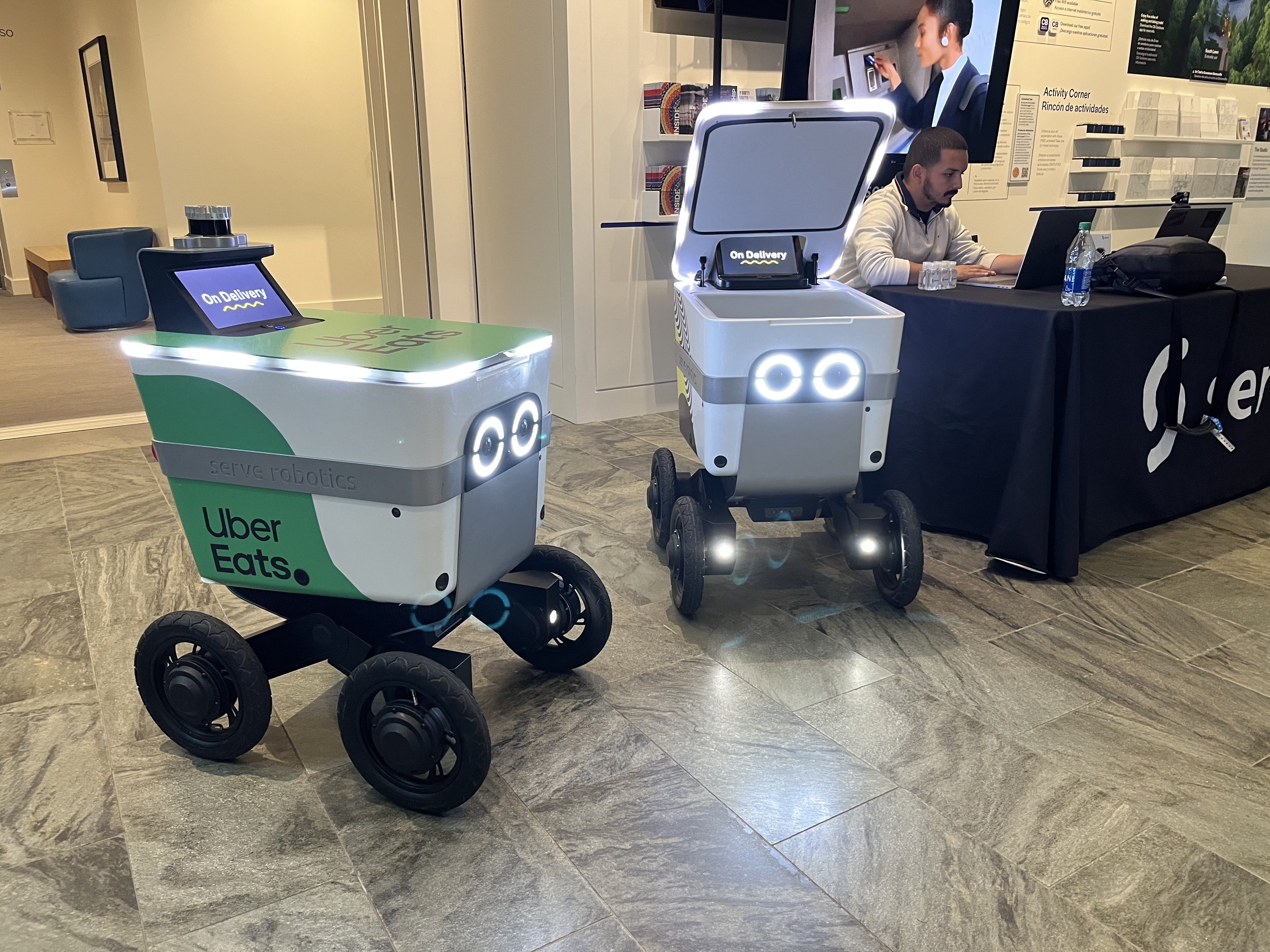We're encountering lots more robots in our daily lives — delivering our food, pouring our drinks, mowing our lawns — but they're just a small glimpse of what's to come.
Why it matters: As brainy machines take over tasks as diverse as chopping vegetables, driving trucks and assisting the elderly, the human labor force will see major shifts in what jobs are needed.
Driving the news: The number of labor-saving robots on the market is exploding, thanks to improvements in AI and lower development costs. People have grown accustomed to some of them (hello, Roomba vacuums), but others still fill us with wonder.
- Robot bartenders are cropping up everywhere, from sports arenas to hotels, while robot servers in restaurants bear bowls of Ramen noodles, plates of chicken curry and other dishes.
- Delivery robots tote meals and groceries on city streets and sidewalks (where they're still a curiosity), as well as college campuses (where students are eager to name them).
- Professional kitchens are being transformed by robots that can flip burgers and brew coffee.
- In Japan, robots are "commonly employed in jobs like chopping vegetables and making sushi," according to Robotics and Automation News. They also help farmers plant rice and other crops.
- Robot dogs are being employed in ways that would make a border collie proud — as pets, tennis ball caddies (good boy!), watchdogs and facilities inspectors.
- But other uses have courted controversy. The New York Police Department stopped using its "Digidog" amid civil liberties complaints, and a proposal to deploy them on the U.S.-Mexico border has raised concerns.
What they're saying about the robot revolution: "I would compare it to the computer industry in the early '90s, when the software was just evolving," Ajay Sunkara, CEO of Nala Robotics, tells Axios. "I believe this is the first stage and that robots are here to stay."
- His company just introduced "Pizzaiola," a pizza-making robot that can churn out 50 pies an hour. It takes voice commands and can knead and stretch dough with its robotic arms (and apply 35 types of toppings).
Between the lines: The ongoing labor shortage is fueling demand for robot workers, while the pandemic heightened concerns over hygiene — making people sensitive to who is touching their food and groceries.
The big picture: Robots are poised to make a particularly big difference in caring for the elderly, experts say.
- Robotic home monitoring systems will detect if an older person falls — and summon help.
- A robot health care worker "could take care of us, tell a story, cook and clean," says Professor Lionel Robert Jr., a roboticist at the University of Michigan. "So they could do the messy work, but they could also be our friend — and take our pulse and blood pressure."
The anthropomorphic angle: Robots are interacting with people in increasingly human and personal ways, which deepens our connection to them — and scares us.
- Humanoid robots can sing and tell jokes and even paint artistic pictures.
- Voice assistants like Siri and Alexa are going to grow sophisticated enough to engage in meaningful dialogue, predicts Professor Christopher Atkeson, a roboticist at Carnegie Mellon University.
- "You’re going to have real immersive conversations with these personal agents, and they’re going to become your friends," he tells Axios.
What's next: Robots under development will eventually be able to empty the dishwasher, fold the laundry and collect the toys your child has thrown on the floor.
- They'll even suck up the stray potato chips lodged in your sofa cushions, per a new video from Dyson.
- "Any kitchen appliance you can think of is going to have a bigger brain and more sensors," Atkeson says.

Editor's note: This story was originally published on June 9.







